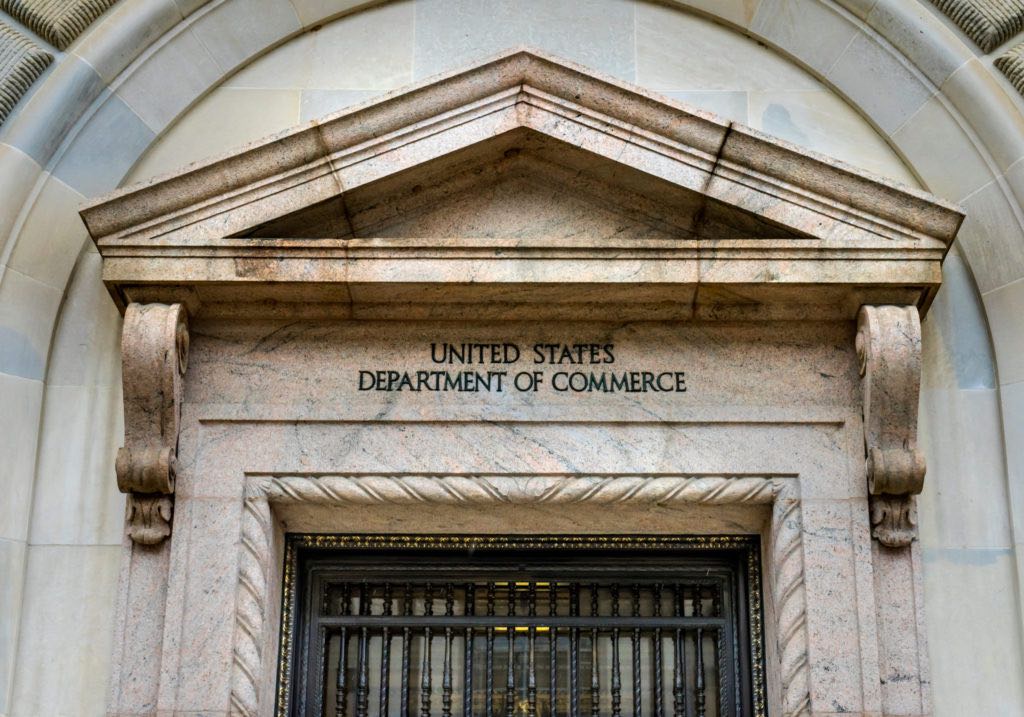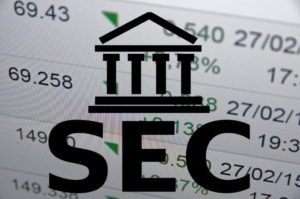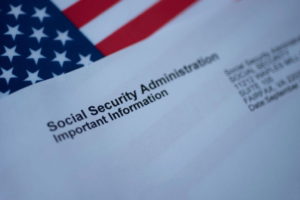
Remarks by Deputy Secretary of Commerce Don Graves at the CEPS Ideas Labs in Brussels 2023
Feb 28, 2023
Remarks by Deputy Secretary of Commerce Don Graves at the CEPS Ideas Labs in Brussels 2023
KCPullen@doc.gov
Tue, 02/28/2023 – 13:28
Export and investment promotion
ICT Supply Chain
Trade enforcement
AS PREPARED FOR DELIVERY
Tuesday, February 28, 2023
Office of Public Affairs
publicaffairs@doc.gov
Don Graves
Thank you, Joaquin, and thank you to CEPS for inviting me to be a part of this terrific program.
We’re gathered here less than a week after marking the one-year anniversary of Russia’s brutal full-scale invasion of Ukraine.
A despicable act meant to divide the West has instead been met with a wall of resistance: from the brave people in Ukraine, as well as from America and our allies in Europe and around the world.
What the past year had made clear is this: Continued economic cooperation between the United States and the European Union is indispensable for growth and economic security on both sides of the Atlantic.
It is also essential to ensuring that democracies prevail against authoritarians and malign actors.
The economic partnership between the U.S. and the EU rests on three pillars:
No. 1 is our strategic economic alliance, which covers broad efforts to harden our supply chains and forge cooperation on issues like energy security and semiconductor production.
No. 2 is our shared defense against security threats, especially the threat of Russia’s continued aggression.
And No. 3 is partnerships with countries beyond our respective borders.
STRATEGIC ECONOMIC ALLIANCE
First, let’s discuss the U.S.-EU strategic economic alliance, and our joint recognition that the concentration of resources in key supply chains can expose our economies to challenging disruptions.
The United States cannot make, mine, or grow everything – nor can Europe, or anyone else. We need resilient, competitive supply chains that can withstand shocks, minimize disruptions, and respond effectively to crises when they occur.
This means working collaboratively with our partners to promote greater supply chain diversification, in areas including energy, technology, and semiconductors.
Let’s take these one by one. On energy, we are working together to reduce Europe’s dependence on Russian natural gas and develop innovative clean energy projects.
A year ago, we established the U.S.-EU Energy Security Task Force to diversify supply and reduce energy demand. It set ambitious targets for U.S. Liquified Natural Gas, or LNG, supply in both the short and long term, and last year nearly 70% of total U.S. LNG exports reached European markets, with approximately 57 billion cubic meters reaching the EU. This represents a major step forward.
And one example of where we’re working together to deploy clean energy is Poland’s announcement that it will acquire technology for its first three nuclear power plants from a U.S.-based company, Westinghouse. This deal cements the type of long-term partnership that I believe will help Poland achieve energy security while creating thousands of clean energy jobs on both sides of the Atlantic.
When it comes to our shared leadership in technology, the U.S. is pursuing a modern and proactive strategy that includes protections against bad actors and authoritarian regimes, as well as forging high-standards, strategic partnerships with allies.
Working with our partners in Europe is crucial for this effort, as we develop shared rules of the road that align with our interests.
We jointly created the U.S.-E.U. Trade and Technology Council – or TTC – to help shape these rules. TTC is a vital mechanism for transatlantic economic cooperation, and it serves as a regular forum to develop collaborative projects that further strengthen our shared tech leadership.
You saw some of this collaboration around semiconductors late last year.
In December, following the third ministerial meeting of the TTC, the two sides agreed to share information on public support in the semiconductor sector.
As you might know, the U.S. Commerce Department’s CHIPS for America program is investing approximately $50 billion to revitalize our domestic semiconductor industry.
We recognize that coordination with our allies is necessary to our success. We are working to avoid subsidy races and oversupply, and we’re engaging with our allies to promote collaboration as we develop the next generation of microelectronic products and processes.
DEFENSE AGAINST SHARED THREATS
The second pillar of our partnership is our defense against shared security threats. As President Biden said last week in Poland, “When Russia invaded, it wasn’t just Ukraine being tested. … All democracies were being tested.”
The U.S.-EU relationship has proven to be a bulwark against threats to our values, contributing to a safer, more democratic world.
In response to Russia’s full-scale invasion, American support for Ukraine was immediate and unwavering, committing billions of dollars in security assistance to counter Russia’s aggression. Along with allies and partners, we also imposed severe economic costs on Russia to hobble its war machine.
Central to this effort are the unprecedented export controls we put in place at the U.S. Department of Commerce, which are hampering Russia’s ability to sustain, repair, and resupply its military and industrial bases.
This impact has relied on a multilateral approach. In record time, we built a coalition of 39 like-minded partners from Europe to the Indo-Pacific, all of whom agreed that Russia’s actions represented a global security threat that could not go unanswered.
It is hard to overstate the significance of this. The pace and depth of our multilateral alignment against Russia was unprecedented.
Because of these export controls, Russia’s imports of semiconductors or chips, the lifeblood of Russia’s weaponry, have had a significant, sustained drop compared to the same period in 2021.
Russia is heavily reliant on outside sources for advanced semiconductors, and as a result, they have struggled to sustain, restore, and replace many of its weapon systems, including more than 9,000 pieces of military equipment that were destroyed over the last year.
We can see first-hand how this has made things difficult for the Russian military. They’re cannibalizing semiconductors from dishwashers, refrigerators, and even electric breast pumps to fix their military hardware. Russia has also turned to pariah states like North Korea and Iran to obtain artillery shells, rockets, and drones made with black market components.
But we’re not done. Multilateral efforts continue, because the war continues.
We’re in constant and close touch, and we’re always looking for ways to amplify our impact. Just a few days ago, we announced new export controls that align more closely with those of our partners and allies, including on industrial goods and luxury goods.
Our challenge going forward is to find new ways of restricting Russia’s battlefield effectiveness, and to increase our enforcement by catching evaders and back-fillers.
Two months ago, the TTC reaffirmed the importance of cooperation on export controls, resolving to take “additional steps” to enhance enforcement collaboration.
The EU and the U.S. have since piloted an information exchange on Russian diversion tactics, and we are actively planning exchanges of best practices. We’ve met with many of our European counterparts over the last two days precisely to build on that progress.
WORKING WITH PARTNER COUNTRIES BEYOND OUR BORDERS
The third pillar in our relationship is about working together to support partner countries beyond our respective borders.
That’s what we are doing together under the G7’s Partnership for Global Infrastructure and Investment, or PGII, which will provide financing for high-standard, sustainable infrastructure in developing and middle-income countries.
Late last year, President Biden joined President von der Leyen to announce a range of new PGII projects, including energy transition projects in Indonesia, solar power development in Honduras, and digital infrastructure investments in Liberia.
As President Biden has said, through our work together on PGII, we are letting partner countries and their people “see for themselves the concrete benefits of partnering with democracies.”
Similarly, under the TTC umbrella, Secretary Raimondo will host a ministerial roundtable this spring with emerging economies to discuss how to improve connectivity. We recently announced our joint work to connect the unconnected in Jamaica and Kenya, and we plan to expand that going forward.
Together with the G7, we’ve also launched the Multi-agency Donor Coordination Platform for Ukraine, to enhance our coordination of economic support for Ukraine’s immediate and future economic recovery and reconstruction efforts.
CONCLUSION
To close, I want to reflect on today’s theme, “Moving Europe from Darkness into Light.”
Hearing that, I can’t help but think of President Biden walking alongside President Zelenskyy, on a bright sunny day in Kyiv.
Even with air raid sirens sounding overhead, what you saw was an unwavering commitment to democracy, sovereignty, and unity.
While Russia hoped to divide us, to weaken our resolve and the international order, it has instead strengthened it.
Today and in the years to come, we must pursue every opportunity to build on that strength.
Thank you again for your ongoing dedication to the U.S.-EU relationship. I’m excited for our discussion.
Bureaus and Offices
Bureau of Industry and Security
International Trade Administration
Leadership
Don Graves
Read the full report from the U.S. Department of Commerce: Read More


